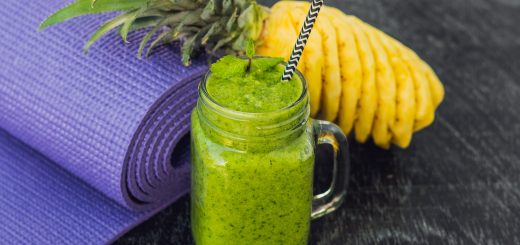Tips for Healthy Living: Understanding Carbs
Tips for Healthy Living
We’ve partnered with III Pillars, a gym in Menlo Park which strives to create a one-on-one training facility. They believe that exercise, nutrition and restoration all play an equal role in achieving optimal health. I really like the energy and total commitment that both Ryan and Erik have to bring healthy living to our community. — Carmelo Sigona
Understanding Carbs — how to gain maximum benefits from your diet.
By Ryan Manuel, BS, a ACSM Health Fitness Specialist, and Erik Heywood, BS, CSCS, CES, a Certified Metabolic Typing Adviser
Much like dietary fats, carbohydrates have gone from the center of America’s dietary recommendations to the root of all dietary evils. Advice as to the amount of carbs you should have in your diet varies greatly depending on which expert you ask or which hot new diet trend is selling the most books. So what is the truth about carbs and what types should you be consuming in your diet? In this article we will give you some quick and useful information about carbs so you can make better choices when you shop.
Along with fat and protein, carbohydrates are one of the three main macronutrients. Carbs have been traditionally classified as either simple sugars (table sugar, maple sugar, fruit juices, etc) or complex carbohydrates (vegetables, whole grain pastas and breads, oatmeal, legumes, etc). Simple sugars contain very few essential vitamins and minerals and are broken down very quickly by the body, which results in a rapid rise in blood glucose. When blood glucose rises rapidly, your pancreas will produce insulin to help remove the excess sugar from the bloodstream. Insulin has numerous roles in the body, but when it comes to excess sugar in the diet, insulin’s job is to store that sugar as FAT. If insulin levels are constantly high from eating too much sugar you will have an extremely hard time burning body fat.
One of the best ways to find carbohydrates that do not raise blood sugar (and therefore insulin levels) too much is to use the glycemic index. Although it does have a few drawbacks, the glycemic index gives a good indicator of how high blood sugar levels will rise after eating specific foods. Here is a list of some various vegetables and fruits and their glycemic index rankings.
Low Glycemic Index (under 20)
- Fruits: cantaloupe
- Vegetables: spinach, celery, cucumber, broccoli, asparagus, cabbage, cauliflower
Medium Glycemic Index (20-60)
- Fruits: bananas, oranges, peaches, apples, strawberries, plums, grapefruit, tomatoes
- Vegetables: Brussels sprouts, onion, peas, string beans, peppers, greens
High Glycemic Index (60-100+)
- Fruits: any dried fruit, pears, pineapple, mango, grapes
- Vegetables: carrots, corn, potato, sweet potato, squash
Just because you may see some of your favorite fruits and vegetables under the “high glycemic index” list, it doesn’t mean you can’t eat them any more. Many of these foods can be high in vitamins and minerals. But if you have weight loss as a goal and you are a big fan of one of these foods, you might want to cut back a little on those items since the end result of those foods can be higher blood sugar. The first thing you should absolutely eliminate from your diet are the highly processed, sugar laden, nutrient deficient foods that signal your body to break them down quickly and then store them as fat (sweets, cakes, pastries, sodas, etc). Look at the ingredients on the foods you buy for any words that ends in “-ose”, such as sucrose (table sugar), fructose (fruit sugar), since these are all sugars.
If you do consume a form of sugar, make sure to have it with a healthy protein or fat. This will slow down its break down by the body and minimize the rise of insulin.
The take home advice on carbs is similar to that regarding fats; avoid many of the man made carbs (processed foods, sweets, pastries, sodas, white bread) and choose the natural ones (lower sugar fruits and vegetables). If you are trying to lose weight, you might want to cut back on some of the higher gycemic carbs (corn, potatoes, dried fruits, etc). Try to vary your sources of carbohydrates by trying new vegetables and emphasize the fruits and vegetables that are lower on the glycemic index like spinach, many of the leafy greens, broccoli, cauliflower, and cabbage. Remember carbs are not the enemy, just do your best to avoid sugars and foods that break down too quickly and raise your blood sugar.










